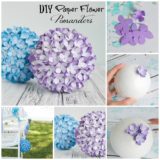Storing mushrooms properly is essential to maintain their freshness and quality. To store fresh mushrooms, place the whole, unwashed mushrooms in a brown paper bag, fold the top of the bag over, and place it in the main compartment of your refrigerator. This method works well because the paper bag absorbs excess moisture, preventing the mushrooms from getting soggy or moldy.
VIEW IN GALLERY
Mushrooms consist of 80 to 90 percent water, which is why they should be stored in the refrigerator rather than at room temperature. Storing them in a cool environment helps minimize moisture loss and reduces the risk of bacterial growth. Keep in mind that moisture and heat are the top enemies when it comes to mushroom storage.
Some people prefer to store mushrooms in a paper towel-lined brown paper bag or a partially-open plastic bag, as these methods can also be effective in keeping the moisture content balanced while retaining the mushrooms’ freshness. It is important to choose a storage method that works best for your specific needs and refrigerator environment.
Selecting Fresh Mushrooms
Selecting fresh mushrooms is an essential step in properly storing and maintaining their quality. When purchasing mushrooms, look for specimens that are firm, plump, and free from bruises or blemishes. The surface should be dry and clean. Avoid mushrooms that appear slimy, wrinkled, or discolored.
When it comes to the smell, fresh mushrooms should have a mild, earthy aroma. A sour or off-putting odor is an indication that the mushrooms are no longer fresh and should not be consumed. Also, make sure to check the gills of the mushrooms, if they’re visible. Fresh mushrooms should have tightly closed gills, while older ones will have opened or darkened gills.
Remember that different varieties of mushrooms may have specific qualities to look for. Here are some tips for selecting common types of mushrooms:
- White Button Mushrooms: The caps should be closed, and the color should be a consistent white or light brown without dark spots.
- Portobello Mushrooms: Look for a firm texture and even color, avoiding any with excessive moisture or sliminess on the surface.
- Shiitake Mushrooms: Inspect the caps for a smooth, shiny appearance and a fresh, earthy scent. Avoid those with broken or cracked caps.
- Oyster Mushrooms: Choose specimens with even-colored, firm caps and a pleasant aroma. The texture should be moist but not slimy.
After selecting fresh mushrooms, it’s essential to store them appropriately to maintain their quality and prolong their shelf life. Proper storage methods will be discussed in the following sections of this article.
Preparation Before Storage
Proper preparation is essential to ensure that mushrooms maintain their freshness and quality before storage. This section covers the steps to clean, dry, and trim mushrooms, as well as a guide for dehydrating them.
Cleaning Mushrooms
It’s important to clean mushrooms before storing them to remove any dirt or debris. However, avoid washing them with water as this can shorten their shelf life. Instead, use a soft brush or damp cloth to gently wipe the surface of the mushrooms. If you must use water, rinse them quickly and pat dry immediately to remove excess moisture.
Drying Mushrooms
After cleaning, ensure the mushrooms are completely dry before storing. Excess moisture can lead to discoloration and mold. Gently pat the mushrooms with a clean towel or paper towel to remove any residual dampness.
How to Dehydrate Mushrooms (Step-by-step Guide)
If you wish to dehydrate mushrooms for long-term storage, follow these steps:
- Preheat your oven or food dehydrator to the lowest setting (usually around 140°F/60°C).
- After cleaning and drying the mushrooms, slice them into thin, uniform pieces.
- Arrange the mushroom slices on a dehydrator tray or baking sheet lined with parchment paper, making sure they do not touch or overlap.
- Place the tray in the oven or dehydrator and let the mushrooms dry for several hours, checking on them periodically. The drying time may vary, depending on the thickness of the slices and the temperature of the device.
- Once the mushrooms are fully dried and brittle, remove them from the oven or dehydrator and let them cool completely.
- Finally, store the dehydrated mushrooms in an airtight container in a cool, dark place.
Trimming Stems
If storing fresh mushrooms, consider trimming the stems to remove any damaged or discolored ends before storing. This helps prevent the spread of bacteria and prolongs the shelf life of the mushrooms. Be cautious with the amount you trim, as excessive trimming may cause the mushrooms to lose more of their natural moisture.
How to Store Mushrooms
Below is a table that identifies different methods of storing mushrooms, with pros and cons.
| Storing Method | Description | Pros | Cons |
|---|---|---|---|
| Brown Paper Bag | Place whole, unwashed mushrooms in a brown paper bag, fold the top over, and store in the main compartment of the refrigerator. | Absorbs excess moisture, prevents mushrooms from getting soggy or moldy. | Mushrooms may dry out if stored for too long. |
| Paper Towel-Lined Brown Paper Bag/Partially-Open Plastic Bag | Store mushrooms in a paper towel-lined brown paper bag or partially-open plastic bag. | Helps keep moisture content balanced and retain freshness. | May not be as effective as a brown paper bag method. |
| Refrigeration | Store mushrooms in a container lined with paper towels or use a specialized mushroom storage container. | Maintains ideal moisture level, prevents spoilage. | Mushrooms may dry out if stored for too long. |
| Freezing | Freeze raw or cooked mushrooms in a resealable freezer bag or airtight container. | Allows long-term storage, mushrooms can be used in future recipes. | Texture may change after thawing, may not be suitable for all recipes. |
| Drying | Dry mushrooms in a food dehydrator or oven set to the lowest temperature, store in an airtight container in a cool, dark spot. | Preserves quality and extends shelf life. | May not be suitable for all recipes, texture may change after drying. |
Mushrooms Short Term Storage
Refrigeration
Storing mushrooms in the refrigerator is one common method of short term storage. It is essential to maintain an ideal moisture level to prevent spoilage. Place mushrooms in a container lined with paper towels or use a specialized mushroom storage container. Replace the paper towels if they become damp to extend freshness. Do not wash mushrooms before storing, as this will cause them to absorb water and spoil more quickly.
Using Paper Bags
Another effective method for short term storage is using paper bags. Paper bags allow airflow, which helps maintain a proper moisture level and prevent mushrooms from becoming slimy. Place the mushrooms in a paper bag and fold the top of the bag down to close it. Store this bag in the refrigerator for best results.
Avoiding Plastic Storage
Plastic storage should be avoided for mushrooms, as it traps moisture and can lead to spoilage. Instead, opt for glass or ceramic containers, paper bags, or specialized mushroom storage containers. These containers provide better airflow and help maintain the ideal environment for keeping mushrooms fresh.
Mushrooms Long Term Storage
Proper long-term storage of mushrooms can ensure they remain fresh and tasty for longer periods. This section provides several methods for storing mushrooms over an extended period, including freezing and drying techniques.
Freezing Raw Mushrooms
Freezing is a popular method to store mushrooms long term. To prepare raw mushrooms for freezing, follow these steps:
- Wash and dry the mushrooms gently.
- Trim off any sections that have become slimy or discolored.
- Spread the mushrooms out on a baking sheet.
- Flash freeze the mushrooms by placing the baking sheet in the freezer for about an hour.
- Once frozen, transfer the mushrooms to a resealable freezer bag or an airtight container.
- Label the container with the date and store it in the freezer.
Freezing raw mushrooms will allow you to keep their freshness for several months.
Cooking and Freezing Mushrooms
Another long-term storage option is to cook the mushrooms before freezing. To do this:
- Clean the mushrooms gently and cut them into desired sizes.
- Saute or steam the mushrooms according to your preferences.
- Allow the cooked mushrooms to cool completely.
- Place the mushrooms in an airtight container or a freezer-safe resealable bag.
- Label the container with the date and store it in the freezer.
Cooking and then freezing mushrooms can help extend their shelf life and make it convenient to use them in future recipes.
Drying and Storing Mushrooms
Drying is another effective method for preserving mushrooms long term. To dry and store your mushrooms, follow these steps:
- Clean the mushrooms and slice them thinly.
- Place the slices on a drying rack, dehydrator tray, or baking sheet.
- Use a food dehydrator or an oven set to its lowest temperature to dry the mushrooms. This process may take several hours.
- Check the mushrooms regularly and remove them from heat once they are completely dry and brittle.
- Condition the dried mushrooms by placing them in a glass container for a week, shaking the container periodically.
- Store the dried mushrooms in an airtight container in a cool, dark spot.
Drying mushrooms is a great way to preserve their quality and extend their shelf life.
Checking for Spoilage
When storing mushrooms, it’s important to check for signs of spoilage before consuming them. There are a few key indicators that can help you determine if mushrooms have gone bad.
Firstly, observe the color and texture of the mushrooms. Healthy mushrooms should have a uniformly smooth surface and maintain their original color. If you notice any dark spots, sliminess, or wrinkles, the mushrooms may be starting to spoil.
Next, smell the mushrooms. Fresh mushrooms have a mild, earthy odor. If you detect a strong, sour, or unpleasant smell, this is a good indication that the mushrooms are no longer fresh and should be discarded.
Additionally, check for any mold or signs of decay. Mold can present itself as white, green, or blue fuzz on the surface of the mushrooms. If you see any signs of mold or decay, do not consume the mushrooms.
It’s essential to always examine the mushrooms before consuming them to ensure that they’re safe to eat. Regularly checking stored mushrooms and promptly removing any that show signs of spoilage helps maintain the quality and freshness of the remaining mushrooms.



















